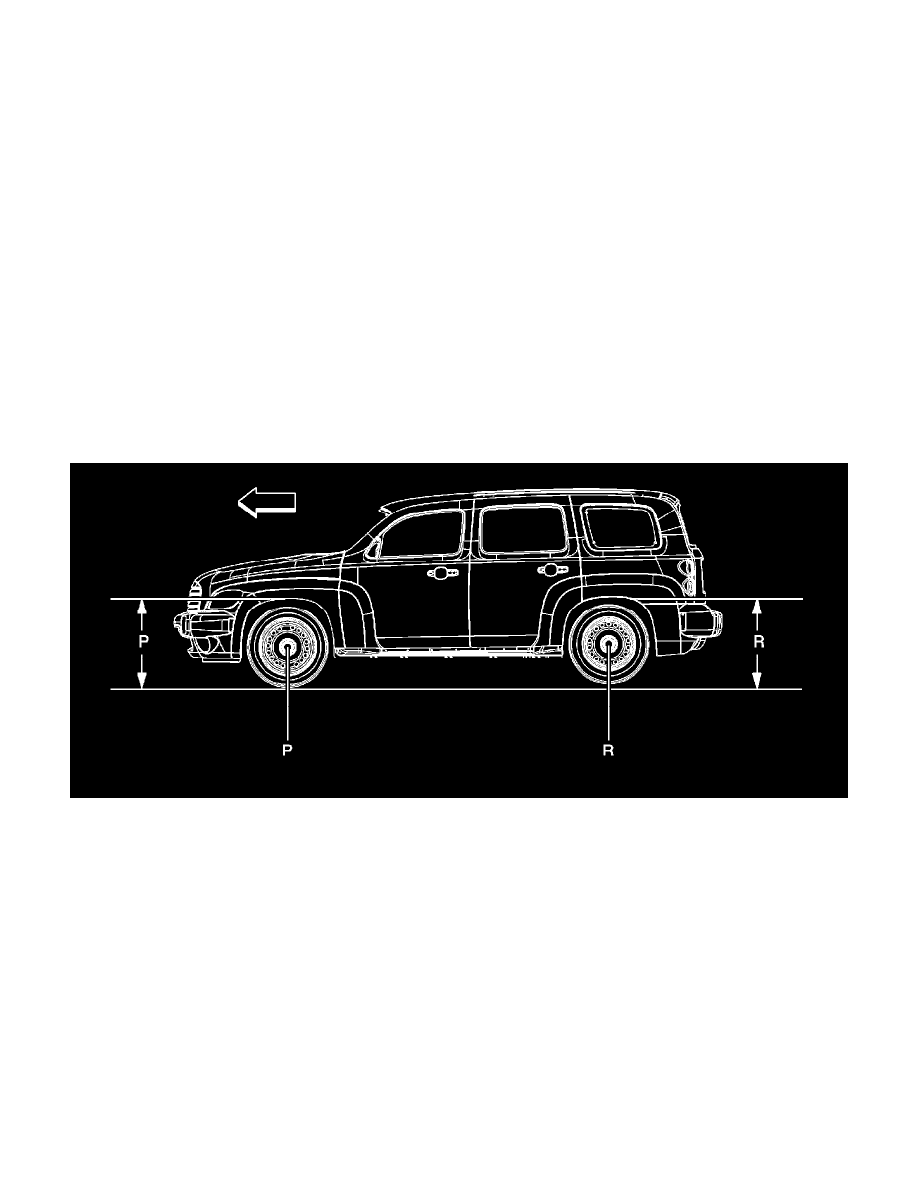HHR L4-2.4L (2010)

Alignment: Testing and Inspection
Trim Height Inspection
Trim Height Measurement
Trim height is a predetermined measurement relating to vehicle ride height. Incorrect trim heights can cause the vehicle to bottom out over bumps,
damage to the suspension components and symptoms similar to wheel alignment problems. Check the trim heights when diagnosing suspension concerns
and before checking the wheel alignment.
Perform the following before measuring the trim heights:
*
Set the tire pressure to the specifications shown on the certification label. Refer to Vehicle Certification, Tire Placard, Anti-Theft, and Service
Parts ID Label (See: Application and ID/Vehicle Certification, Tire Placard, Anti-Theft and Service Parts ID Label).
*
Check the fuel level. Add additional weight if necessary to simulate a full tank.
*
Make sure the passenger and rear compartments are empty, except the spare tire.
*
Make sure the vehicle is on a flat and level surface, such as an alignment rack.
*
Check that all the vehicle doors are securely closed.
*
Check that the vehicle hood and rear deck lids are securely closed.
*
Check for installed after market accessories or modifications that could affect trim height measurement.
Important: All dimensions are measured vertical to the ground. Trim height should be within ±10 mm (±0.39 in) to be considered correct.
Measuring the P and R Dimension
Use the following procedure to check the P and R dimensions.
1. Use your hands to lift the front bumper approximately 38 mm (1.59 in).
2. Remove your hands and allow the vehicle to lower.
3. Use your hands to jounce the front of the vehicle downward approximately 38 mm (1.59 in).
4. Remove your hands and allow the vehicle to rise.
5. The dimension (P) for the left and right side of the vehicle is measured from the bottom lip of the wheel opening to the ground measured at the
center line of the front wheel.
6. Compare the measurement to the specification table. Refer to Trim Height Specifications (See: Suspension/Specifications/Mechanical
Specifications/Trim Height Specifications).
7. If the measurement is outside of the specified range, replace the front springs. Refer to Strut, Strut Component, or Spring Replacement (See:
Suspension/Suspension Spring ( Coil / Leaf )/Service and Repair/Strut, Strut Component, or Spring Replacement).
8. Use your hands to lift the Rear bumper approximately 38 mm (1.59 in).
9. Remove your hands and allow the vehicle to lower.
10. Use your hands to jounce the rear of the vehicle downward approximately 38 mm (1.59 in).
11. The dimension (R) for the left and right side of the vehicle is measured from the bottom lip of the wheel opening to the ground measured at the
center line of the rear wheel.
12. Compare the measurement to the specification table. Refer to Trim Height Specifications (See: Suspension/Specifications/Mechanical
Specifications/Trim Height Specifications).
